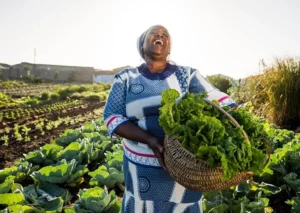In Africa, a significant shift is underway in the agricultural sector, aiming to combat hunger and build resilience against climate change.
The continent, rich in biodiversity with 30,000 edible plant species, is currently overreliant on just three crops: maize, wheat, and rice.
This reliance narrows the nutritional spectrum and heightens the risk of famine and vulnerability to environmental changes.
Climate scientist Tafadzwanashe Mabhaudhi emphasizes the potential of underutilized, resilient crops like cowpea, pigeon pea, millet, and sorghum.
These crops can grow in challenging conditions, offering a solution to the continent’s hunger crisis.
Studies show that small farmers with diverse crops face lower malnutrition risks, highlighting the importance of agrobiodiversity over monoculture.
Governments are encouraged to promote crop diversification as a strategy for sustainable agriculture.

The push for diversification in Eastern and Southern Africa has shown promising results.
It improves maize productivity and stabilizes farmers’ income, reducing the impact of market fluctuations.
Diversifying crops means more than just changing what is grown; it also involves integrating smallholder farmers into wider markets.
Successful programs like the World Food Programme’s Purchase for Progress in Ethiopia have demonstrated the benefits of such integration, boosting household spending and investments in education.
However, achieving diversification requires a comprehensive approach that balances policy reforms, private sector participation, and land policy adjustments.
This ensures that diversification efforts support, rather than hinder, food production and environmental sustainability.
Embracing a diversified agricultural model promises to enhance Africa’s food system resilience, reduce poverty, and improve nutritional outcomes.
In conclusion, this signifies a noteworthy advancement in the continent’s agricultural development.

